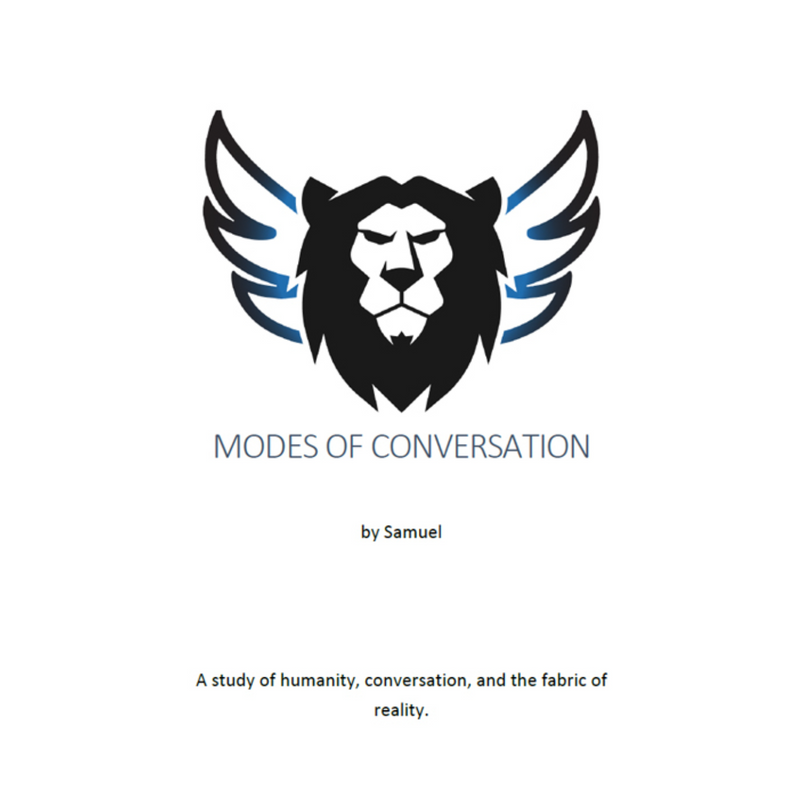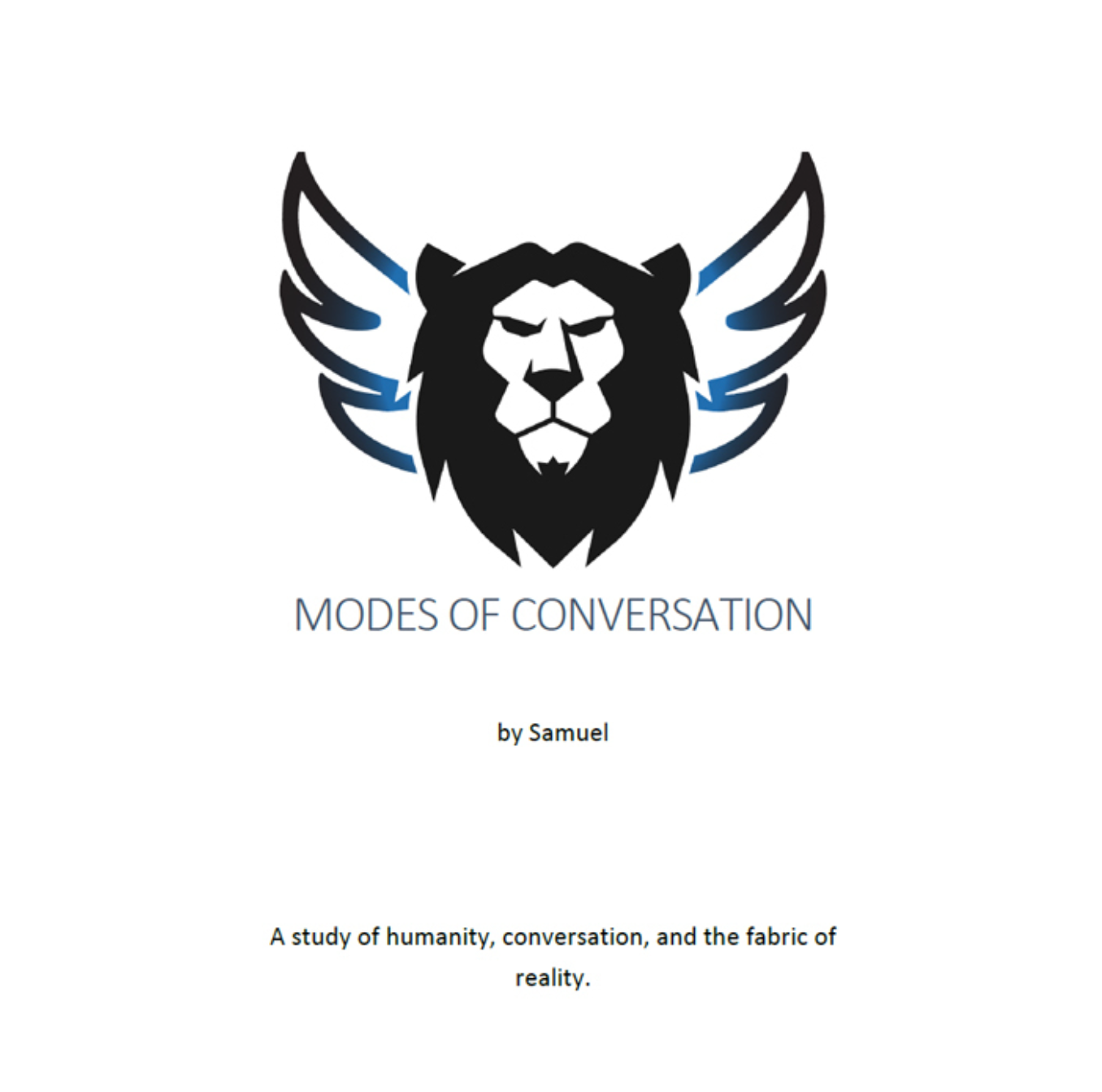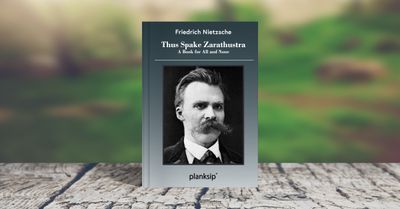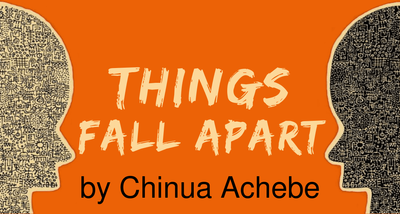A Critic's Meta-Review: 4/5
Modes of Conversation (2019) by Samuel Bagot is a book that claims to offer readers an in-depth exploration of humanity, conversation, and the fabric of reality. The author seeks to provide insights into the complexities of human interaction and the various ways in which we construct meaning in our lives. However, upon closer examination, it becomes evident that the book is not just a study of human behaviour and perception, but rather a hybrid of pre-social commentary that feeds into a constructivist worldview. In this meta-review, I will examine the two primary themes of the book and their implications for our understanding of human nature and the world around us, as presented by Samuel Bagot.
To conduct a comprehensive analysis of a book, I usually begin by scrutinizing the table of contents, index, bibliography, list of illustrations, and other relevant sections. Unfortunately, this particular book lacks an index, bibliography, and list of figures, which makes it challenging to navigate in the manner that I prefer. As a result, my ability to conduct a thorough examination of the book is impeded.
I found Bagot's use of a Tilda (~) to introduce the ten Modes of Conversation to be intriguing. As I read, I form testable judgments by comparing my assumptions as I read (we all do a similar type of thing). The Tilda symbol next to each Strata level suggested to me that the boundaries were fluid, akin to the divisions of the Triune brain, which are not physical barriers in the brain but rather imaginary lines that distinguish one area of the brain from another. Given that I was only a few pages into the book, my speculation was that Sam was attempting to convey this idea. Let's proceed to explore further. Figure 1.1, the first figure in the book, will serve as our starting point.
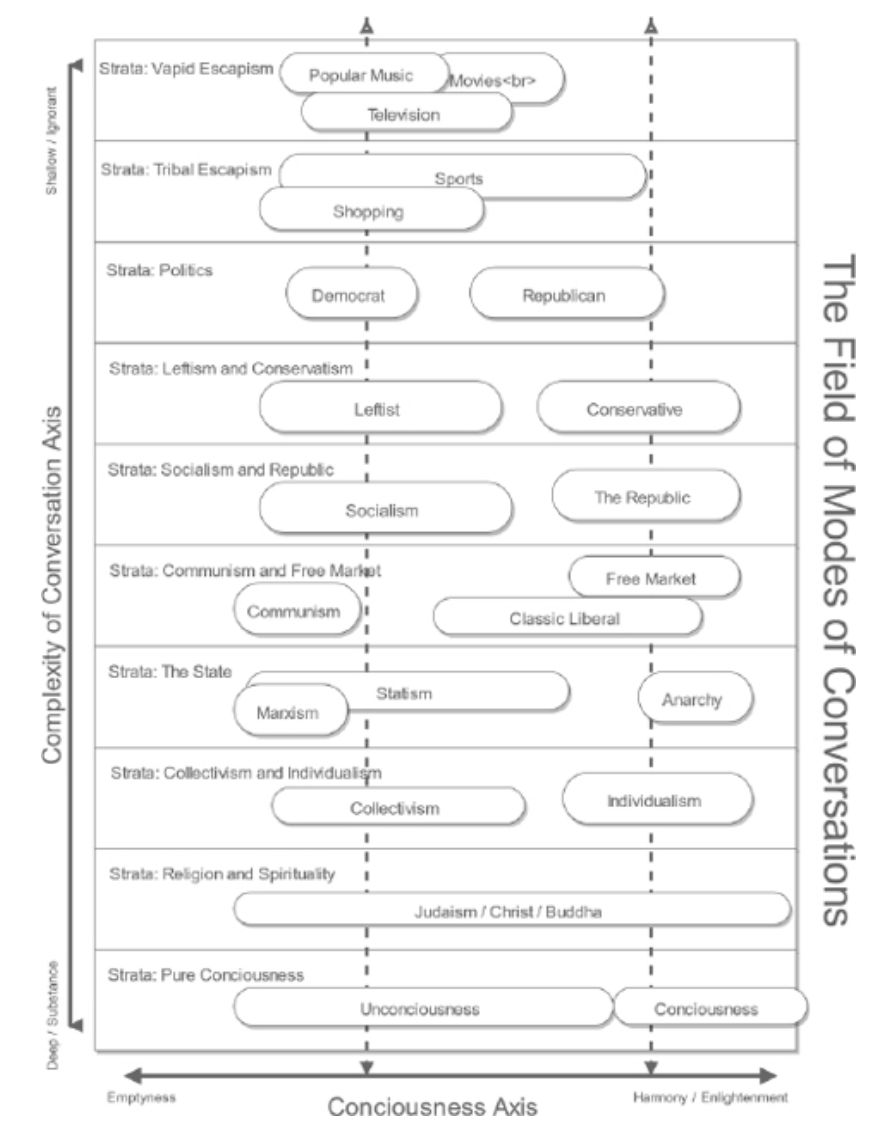
As you can see from the above figure and the ten strata each Tilda-inspired approximation signifies the subsequent commentary in the book and as such, I decided to pick one Strata and examine it. I decided to pick the simplest one that Bagot has on his graph; ~Strata: Religion and Spirituality.
~ Strata: Religion and Spirituality
Before I go into the specifics of this section, I have to point out that on the Ignorance/Substance scale, Sam values Religion and Spirituality conversations in degrees of ignorance, which should excite the philosopher in me. The opposite of ignorance is knowledge and so Sam is saying that Religion and Spirituality are deep substances, not shallow ignorance. The opposite of ignorance is a knowledge claim so Sam is essentially making a knowledge claim, he calls it What Is (pg.104). In philosophy, this is called epistemology.
Is it true that conversations about Religion and Spirituality are knowledge claims? To test this micro-judgement I continued to read through this section I was pleased to see that Sam acknowledged other authors like Don Miquel Ruiz, Eckhart Tolle, Don Juan, etc. into the Religion and Spirituality category. Furthermore, Sam also acknowledges that accepting dogmatic metaphors transformed his life. Okay, I am sympathetic to his position and I am glad that I picked this section first to read.
Sam refers to John B. Calhoun and his study of rats beginning in the 1960s. The study is used as a model to understand the effects of overcrowding and social density on humans, particularly in urban areas. The experiment suggests that social isolation and negative social interactions can have a significant impact on mental health and well-being. Sam makes the metaphorical connection to the Tree of Life but I have to acknowledge Sam for this connection because I also consider the Tree of Life a diagrammatic representation of the evolutionary history of all living organisms, with the earliest branching points representing the origin of major groups of organisms, and the tips of the branches representing individual species. This tree-like diagram is used to illustrate the evolutionary relationships between different species and how they are related through common ancestors. Are we all connected? Absolutely!

